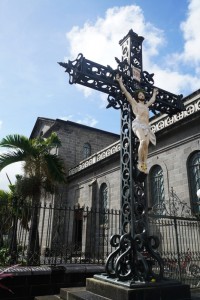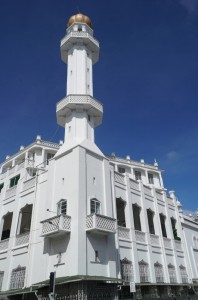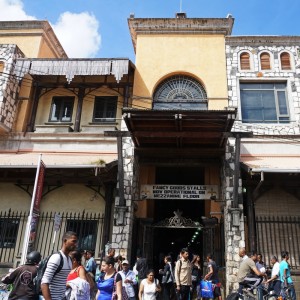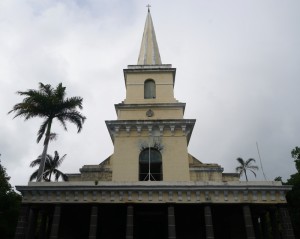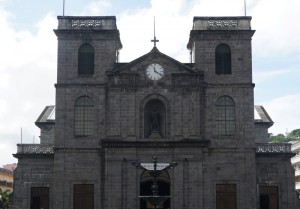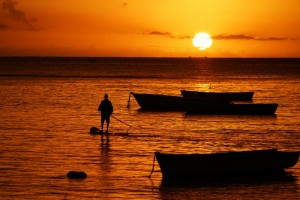 |
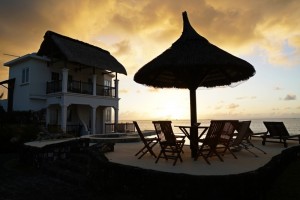 |
Mauritius, an island nation in the Indian Ocean with an area of about 2,000km²and a population of 1.3 million is home to some of the world’s rarest plants and animals and one of the world’s top luxurious tourism destinations.
Mauritius, first visited by the Arabs and later by the Portuguese in 1507, was not inhabited until the Dutch established a colony in 1638 naming it after Prince Maurice van Nassau. The Dutch abandoned the colony in 1710 and the island became a French colony in 1715. Being an important base on the trade route with the East before the opening of the Suez Canal, the island was a prey among major powers. The British invaded the island from the north in December 1810 bringing it under its rule under the name Mauritius. But the British allowed the use of the French language and the French law in criminal and civil matters to continue.
Following the abolition of slavery in 1835, the British came up with a ‘great experiment’ by using indentured labour. Mauritius was chosen as the place: between 1834 and 1921, 462,000 indentured labourers arrived in the island to work in sugar estates, factories in transportation and construction. The experiment was successful and implemented in other British colonies. In November 1901, Gandhi stopped in Mauritius on his way to India from South Africa and stayed on the island for two weeks. He urged the Indo-Mauritian community to take an interest in education and to play an active role in politics.
The country of Mauritius comprising the islands of Mauritius, Rodrigues and a couple outer islands became independent in 1968. The economy since independence in 1968 has been based on tourism, textiles, sugar, financial services with growing importance attached to information and communication technology, seafood, hospitality, healthcare, education and training. It is ranked high in terms of economic competitiveness, a friendly investment climate, good governance and a free economy. Its The 2016 estimate of GDP(PPP) and per capita is $23,322 billion and $18,728 respectively. Its currency is Mauritian rupee (R) which is roughly €1 to R10.
Mauritius is an amazing country: multiethnic (with ancestors mostly from India, Africa, Europe and China), multi-religious (according to 2011 census 48.5% follow Hinduism, 32.7% Christianity, 17.3% Islam and 0.4% Buddhism) and multilingual (English, French and Mauritian Creole). Education is free from pre-primary to tertiary level. The adult literacy rate was estimated at 89.8% in 2011. It boasts two World Heritage Sites, both of which are related to its history: Aapravasi Ghat is the first immigration depot in a British colony to receive indentured labour while Le Morne, a giant basaltic monolith – Le More Brabant on the Le Morne Peninsula, has been a symbol of the slaves’ fight for freedom.
June 4 Saturday: Johannesburg, South Africa (GMT+2 ) – Mauritius (GMT+4)
Friends who have visited Mauritius have told me that there is not much to see apart from beaches. Hence, I decided to spend six days on the island without fixed plan: I would go with the wind….
I had a comfortable flight from Johannesburg to Mauritius and was met on arrival by Jean, owner of a B&B in Mahébourg near the airport. I paid €10 for the pick-up. Both Jean and his sister Jeanette are polite and helpful. So I decided to stay one more night before moving to another part of the island.
I spent a leisure afternoon strolling in Mahébourg built by the Dutch and abandoned under the French coloniser. The town is run-down without too tourists: it has its own charm and appeal with lush green trees andsurrounded by blue lagoon. I like the laid-back and relaxing atmosphere. At the waterfront, I find a mural depicting the battle between the French and the British at the Grand Port in 1810.
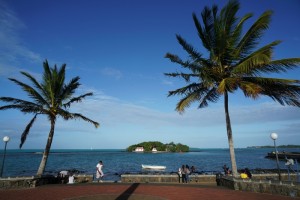 |
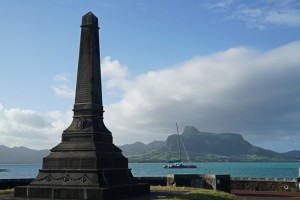 |
On my way back to Jean’s B&B, I made enquiries at the bus terminal and passed by the charming CHILLpill Guest House (www.chillpillmaurice.com) on Rue Sivananda right by the sea. I like the setting and white-washed buildings with hatched roof. It’s the place for me! Jean’s sister Jeanette prepared a fried fish with rice for me in the evening (€6). But the fish was too dry. I was tired but could not sleep: the room was stuffy. I could not leave the window open as there was no mosquito net. Despite my dislike for air-conditioning, I had to turn it on. The noise then kept me awake.
June 5 Sunday: The South Coast, Coloured Earths & Grand Basin
I got up early but did not leave B&B till 9:30am. Jean had suggested me visit Souillac and the Rochester Falls. My plan was to go to both the Coloured Earths at Chamarel and Souillac. He said if I wanted to do both, I might have to hire a taxi. As it would not be cheap to hire a car, I decided to take the bus and just do as much as I could.
When I got on the bus, I found out that it would go all the way to Baie du Cap. Well, another bus could take me to Chamarel. It would work! The bus fare is cheap in Mauritius- a fare is kept at R34 maximum. The bus stopped at all villages along the route: I estimated that over a hundred passengers travelled on the bus during the two-hour ride. I enjoyed watching the locals, the street scene, landscape with lush green sugar cane fields next to the road. I would not drive here as the roads are narrow often with cars parking on the kerbside.
By the time I reached the entrance to the Coloured Earths Park, it was almost midday. Then I realised that the attraction is about 3km away! Without a car, I could only walk. Cars passed by without stopping. I was glad to break up the walk with a brief stop at the Chamarel Waterfall, the highest waterfall in Mauritius at 83m high.
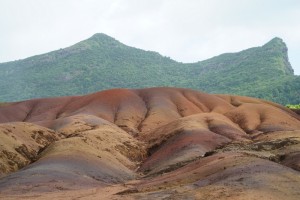 |
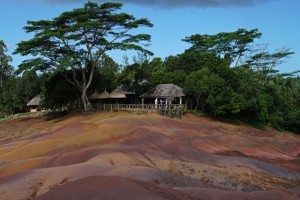 |
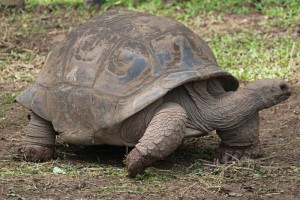 |
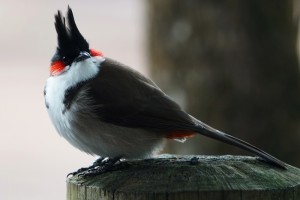 |
The walk is easy and the site is relatively small and not spectacular as compared with similar features I have seen elsewhere. It started to drizzle and without sunlight, the colours looked dull and lifeless. I waited patiently for over 20 minutes and was delighted to see sun rays serving as spotlight. I began to count the colours but found ‘blue’ missing.
Then I met two Chinese tourists at the main viewing platform. They asked where I came from and how. When they knew I walked three kilometres to reach the site, they were surprised as well as sympathetic. As a result, they offered to give me a lift as there was still one empty seat on the minibus. I was lucky! My Mainland China friends are all working for a Chinese construction company which is building a couple of high rise residential blocks in Phoenix, a town close to Port Louis.
Instead of dropping me off at the park entrance, they gave me a lift to Grand Bassin, a volcanic crater lake, known amongst the Hindus as Ganga Talao which is dominated by Hindu god Shri Mangal Mahadev standing at 32m high (Mauritius’ tallest sculpture). It is a pilgrimage site for the annual Maha Shivaratree festival in February.
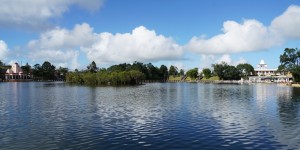 |
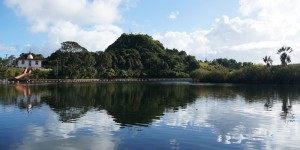 |
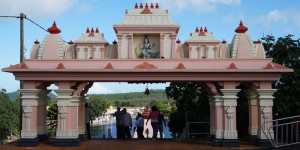 |
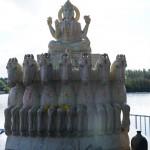 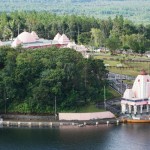 |
driver told me to get an express bus to Mahébourg. The journey took an hour and I spent another 15 minutes to walk back to the B&B. I stopped by CHILLpill Guesthouse and met Brigitte, the manager who kindly showed me around. The room is R1600 a night. I asked her about the best place to stay in the north shore. She suggested me avoid the touristic and crowded Grand Baie. Trou aux Biches would be a better choice.
June 6 Monday: The West Coast & Trou aux Biches
My original plan for today was to visit Port Louis before heading to Trou aux Biches. Jean gave me a lift on his way to work. This meant that I had to get up at 6am. I walked around the waterfront which looked dead at 8am in the morning. I then acrossed the road to the central market which is always the place to explore. But with a heavy backpack on my back, I decided to take the bus in the North Bus Terminal to my destination direct.
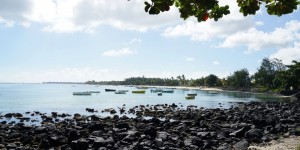 The bus ride is short and pleasant (unlike my long bus ride to Chamarel). The bus conductor told me to get off near Veranda Hotel. I looked at two guest houses along the road which do not appeal to me. I stopped by a diving shop to seek information on diving and snorkeling and met a lady from South Africa. She seems impressed by my journey from Cape Town to Johannesburg and my passion for travel and knows the type of accommodation that would appeal to me. Based on her recommendation, I found my way to Hotel La Tonnelle opposite the fish station by the beach run by Denis, a Belgian. He kindly offered me a single room with half board for €55. The receptionist showed me the room which is simple but stylish.
The bus ride is short and pleasant (unlike my long bus ride to Chamarel). The bus conductor told me to get off near Veranda Hotel. I looked at two guest houses along the road which do not appeal to me. I stopped by a diving shop to seek information on diving and snorkeling and met a lady from South Africa. She seems impressed by my journey from Cape Town to Johannesburg and my passion for travel and knows the type of accommodation that would appeal to me. Based on her recommendation, I found my way to Hotel La Tonnelle opposite the fish station by the beach run by Denis, a Belgian. He kindly offered me a single room with half board for €55. The receptionist showed me the room which is simple but stylish.
After getting rid of my backpack, I began to stroll along the beach all the way to Le Canonnier Hotel (about 4km). I was tired and had a beer in this expensive hotel before taking a bus back to Trou aux Biches.
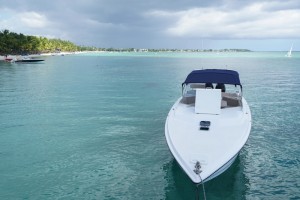 |
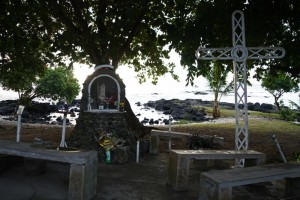 |
With the help of the receptionist, I booked a boat tour to Île aux Cerfs the next day (R1500). Around 5pm, I caught glimpse of golden beams of the setting sun. I walked over to the beach and was delighted to watch a fisherman coming back with half a dozen of yellow fin tuna and two a metre-long dorado. The sunset was gorgeous with a variety of colours including gold, orange, red, pink and purple.
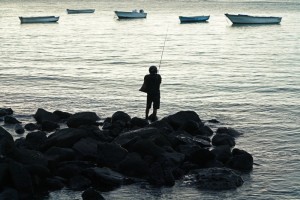 |
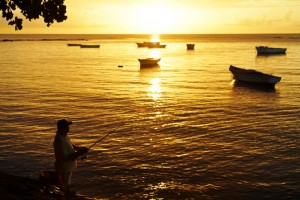 |
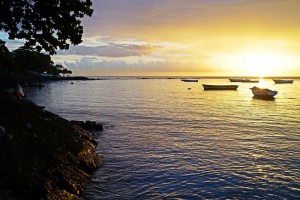 |
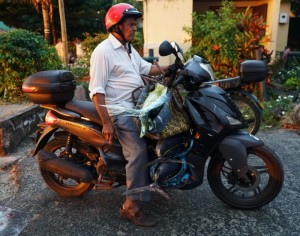 |
At 8pm, I had dinner with my host Denis and his partner and six hotel guests (a French couple and a family of four from South Africa). We had crab soup, octopus and pasta and pudding. The food is excellent and I had a great time chatting with my friends.
June 7 Tuesday: The East – Boat Cruise – Île aux Cerfs
Mauritius is famous for its coral sea, warm water and rich marine life. The boat trip was supposed to begin at 9:15am at Trou d’Eau Douce on the east coast. A minibus picked me up at 8am and went around Grand Baie to pick up other tourists. But the last eight who were staying in the same hotel were having their breakfast. They turned up half an hour later without saying ‘Sorry’. How rude and inconsiderate!
Owing to road repair works, we were further delayed and did not board our catamaran till 10:30am. It’s Mauritian time! As I was not in a hurry, I was not too upset: I had a free bus tour of Grand Baie and the northern part of the island. The weather was good with sunshine and a blue sky. The catamaran carrying 24 passengers is comfortable and well-equipped. The staff are young, energetic and friendly. Vicky, our guide arranged half a dozen passengers to do para-sailing. I had not thought of doing it till the azure sea and beautiful landscape lured me to spend R1500 on this adventure which was over in a few minutes. Too short!
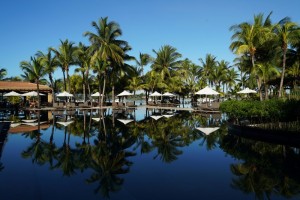 |
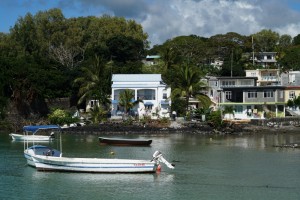 |
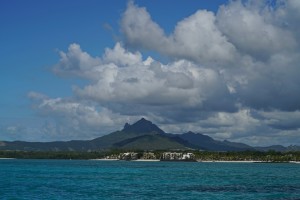 |
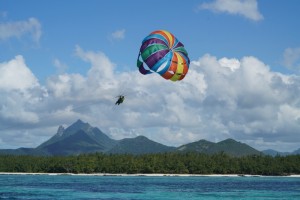 |
Then we were taken by a small motor boat to see a waterfall at the estuary of Grand Rivière.
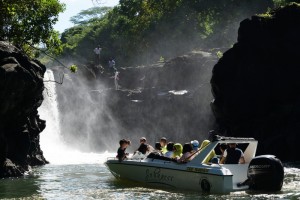 |
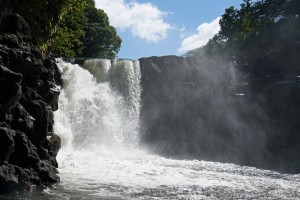 |
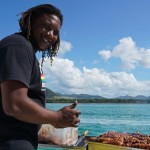 While the staff were preparing our lunch, we snorkeled for half an hour. I was disappointed: the water was not clear and there was not much to see. After a nice BBQ lunch with chicken, fish and a sausage, the crew dropped us at Île aux Cerfs for an hour and a half. The beach was full of day-trippers and tourists. Too noisy and crowded for me!
While the staff were preparing our lunch, we snorkeled for half an hour. I was disappointed: the water was not clear and there was not much to see. After a nice BBQ lunch with chicken, fish and a sausage, the crew dropped us at Île aux Cerfs for an hour and a half. The beach was full of day-trippers and tourists. Too noisy and crowded for me!
We were back in Trou d’Eau Douce shortly after 4pm. Vicky, the guide dropped me off at a bus stop nearby so that I could get a bus back to Mahébourg. The bus came at 4:45pm and I had an hour’s scenic ride along the east coast. I took a nice room with a comfortable double bed at CHILLpill Guesthouse for two nights. I listened to the music of the sea while watching the dancing moonlight. I had a good sleep.
June 8 Wednesday: The South – Boat Cruise – Two Islands
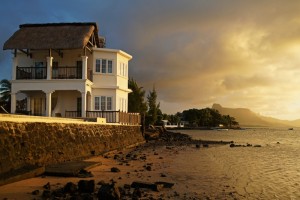 |
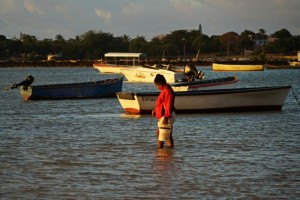 |
I watched a lovely sunrise as I got up early. Jean had suggested me take a boat trip to three islands from Blue Bay the first day I arrived. I asked Brigitte to arrange a trip on June 8 or 9. As the other two guests at CHILLpill – Sarah and Thomas from Belgium, were also interested, we had a group of three. Brigitte found a boatman to take us to three islands for R1700 each. Thomas had hired a car. Before heading to Blue Bay, a marine park, we went to the old port area taking photos.
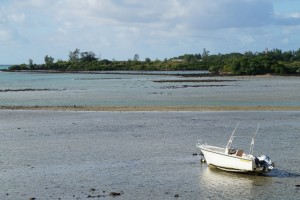 |
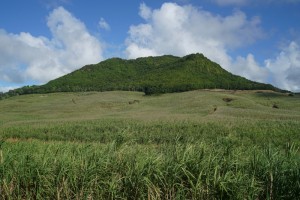 |
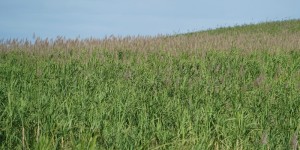 |
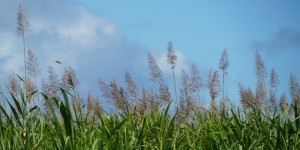 |
Shortly after 10am, we arrived at Blue Bay and met Olivier who arranged us to take a glass-bottom boat in the marine park. Owing to the bleaching problem, the corals are colourless and lifeless. As expected, marine life is not abundant. As the water was cold, I did not stay long in the water. But it started to rain and I got cold and wet while standing in the boat.
The boat is old and not comfortable. But we had two nice middle-aged Mauritian boatmen. As the wind was too strong to get out of the lagoon, we could not visit the island with the lighthouse. Instead, we were taken to a small beach on Île des Aigrettes which is a nature reserve. Unfortunately, we could not visit the island without joining a guided tour (R800pp).
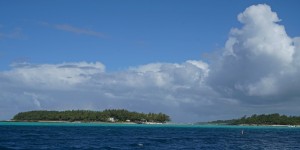 |
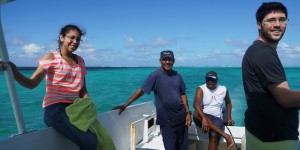 |
 |
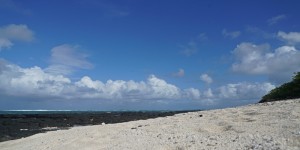 |
Then we snorkelled for half an hour. The water was clearer with richer marine life. But I still found the water too cold and soon got out of the water! The boat returned to Blue Bay and we had lunch on Île des Deux Cocos. Olivier wrapped unicorn fish in tin foil paper and placed it over a fire. Fish cooked in this way is juicy, fresh and most delicious. The weather was unstable: it rained while we had our lunch. Thomas snorkelled for another half an hour while Sarah and I stayed on the boat. The water was too cold for us. It was almost 5pm when we were back at Blue Bay.
At 7am, we had home-cooking at the guesthouse: chicken with rice and a dessert (R300). I had a relaxing day and enjoyed the company of my young Belgian friends.
June 9 Thursday: Port Louis – The West
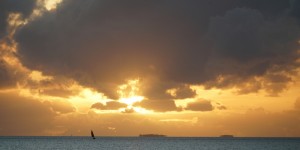 |
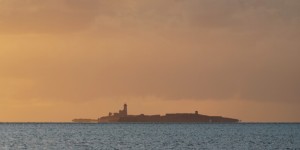 |
I was determined to visit Port Louis before leaving Mauritius. I took the express bus at 8am. But owing to traffic jam, I did not get off the bus at Line Barracks till almost 9:30am! It’s raining and chilly. I strolled aimlessly around the capital and visited the St James Cathedral (Anglican), St Louis Cathedral (Catholic) and the parks. I intended to walk up to the citadel. But two locals advised me not to go alone!
I walked around the Central Market and the China Town which are vibrant but not tidy. It started to rain heavily when I reached the Caudan Waterfront which has plenty of shops and eateries.
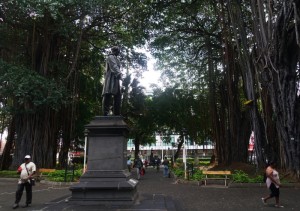 |
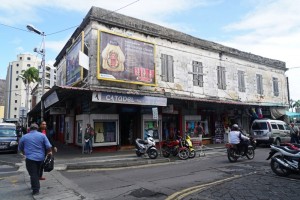 |
I finished my tour of Port Louis at Aapravasi Ghat opposite the North Bus Terminal. It’s a memory lane especially for those with ancestors arriving here as indentured labourers. There are however not many surviving structures except the remains of kitchens, lavatories, a hospital block, housing sheds, a flight of stairs down which every immigrant passed.
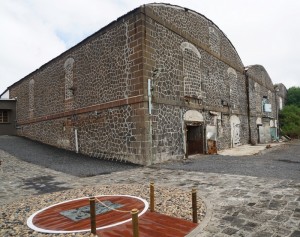 |
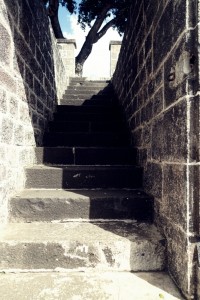 |
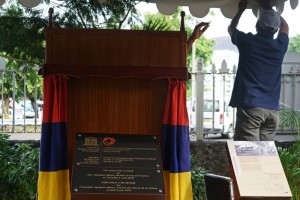 |
I went to the interpretation centre reading about the British ‘Great Experiment’, origin of the laboureres (over 97% had come from India), their journey across the ocean, how they were processed on arrival and their life in the sugar estate or factory. This visit reminds me of my visit to the reception centre for immigrants in San Francisco, for slaves in Ghana, Benin and Senegal (all of which are World Heritage Sites). The staff of the centre were busy preparing for a ceremony at 3 pm that afternoon when a Minister would unveil a plague commemorating the register of the labourers (or something like that).
I left at 2pm hoping to have a chance to visit Le Morne Bradant at the southwestern corner of the island. The landscape and scenery of mountains, sugar cane fields, salt pans in Tamarin and the coastline are fantastic. But the bus heading to Baie du Cap stopping every five minutes is the slowest way to move around on the island. As a result, it was almost 4pm when the bus reached Le Morne. It was too late and I had to give it a miss.
I caught a collective taxi (R30) to Chemin Grenier. It was around 4:45pm when I boarded a bus heading to Mahébourg. ButI did not get off till 6:30pm after spending four and a half hours on the road. Is it a waste of time? Or is it an authentic introduction to normal life on this island paradise?
Tonight, I would stay at Jean’s B&B where I had left my suitcase. It’s 10-minute walk from CHILLpill Guesthouse to Jean’s place. As it was dark, I was a bit scared. Then I met Christian, a French tourist who was staying at CHILLpill Guesthouse. He offered to walk me back to Jean’s place. I am indeed most grateful for his company and he seems amused to visit Jean’s B&B which is totally different from CHILLpill Guesthouse.
June 10 Friday: Mauritius – Reunion
I got up before 6am in order to take a free ride to the airport with Jean. I was at the airport by 7am and was taken by surprise by the high standard and service of the lounge. My 45-minute flight departed on time and I was in Reunion before midday.


